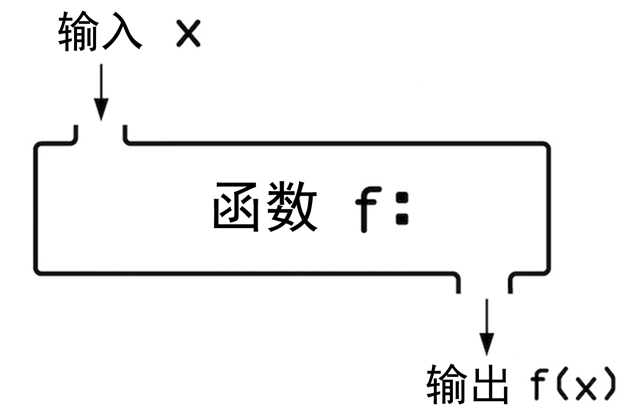51. Programming:
Instructions for the computer to execute.
52. Code:
Commands to be executed by a computer.
53. The underlying programming language:
Compared with advanced languages, it is closer to binary languages.
54. Advanced programming languages:
It reads like an easy-to-understand language in English.
55. Assembly Language:
A programming language that is difficult to read and understand.
56.Python:
I won't talk nonsense about this.
Newbie Course: https://www.runoob.com/python/python-tutorial.html
57. Function:
Accept the input and execute the output result statement.

58. Practice:
A generally accepted approach.
59. Call:
Make the input parameters of the program output normally.
60. Parameters:
Data passed to a function.
61. Required parameters:
Non-optional parameters.
For example:
1 #x As a required parameter 2 def asd_ww(x,y=1): 3 return x-y 4 5 v=asd_ww(3) 6 print(v) 7 8 >>12
62. Optional parameters:
Non-mandatory parameters.
For example:
1 #y As an optional parameter 2 def asd_ww(x,y=1): 3 return x-y 4 5 v=asd_ww(3) 6 print(v) 7 8 >>12
63. Built-in functions:
Python's own functions.
For example:
1 #View the current python Interpreter built-in functions 2 import keyword 3 4 print(keyword.kwlist) 5 6 >>['False', 'None', 'True', 'and', 'as', 'assert', 'async', 'await', 'break', 'class', 'continue', 'def', 'del', 'elif', 'else', 'except', 'finally', 'for', 'from', 'global', 'if', 'import', 'in', 'is', 'lambda', 'nonlocal', 'not', 'or', 'pass', 'raise', 'return', 'try', 'while', 'with', 'yield']
64. Scope:
The range within which variables can be read and written.
65. Global scope:
Variables can be read and written throughout the program.
66. Global variables:
Variables with global effects.
For example:
1 x=1 2 y=2 3 4 print(x) 5 6 >>1
67. Local scope:
The scope of a variable that can only be read and written in the function (or class) where it is defined.
For example:
1 def f(); 2 a=1 #Define local variables within a function, which can only be called within a function 3 b=2 4 5 print(a) #Trying to call outside of a function 6 7 >>NameError: name 'a' is not defined
68. exception handling:
Detect error conditions, catch exceptions if they meet the defined conditions, and decide how to handle them.
For example:
1 a=3 2 b=0 3 # print(a/b) #If you run this line directly, a Zero Division Error error will occur. 4 try: 5 print(a/b) 6 except ZeroDivisionError: #List possible errors 7 print("Input error!") 8 9 >>Input error!
69. Document string:
Explain the function function and record the string of its parameter type.
For example:
1 def f(x,y): 2 """ 3 Return x+y Value 4 :param x:int 5 :param y:int 6 :return:int,x and y Product 7 """ 8 return x*y
70. Methods:
Functions closely related to the specified data type.
71. Iterative:
Objects can use loops to access none of their own elements.
For example;
1 a="ajshfdsh" 2 i=0 3 for i in a: 4 print(i) 5 6 >> 7 a 8 j 9 s 10 h 11 f 12 d 13 s 14 h
72. Iterable objects:
Iterative objects, such as strings, lists, and elements.
73. index:
Represents the position of elements in an iterative object.
For example:
1 a=['a','b','c'] 2 s=a.index('b') 3 print(s) 4 5 >>1
74. Variable:
Contents in containers can change. For example, list, dictionary (dic)
75. Invariant:
The contents of the container should not change. tuple
76. Dictionary (dic):
A built-in container for storing objects with corresponding keys and values.
For example:
1 a={'name':'xiaoming','age':18}
77. Key:
Used to find the corresponding value in the dictionary.
For example:
1 a={'name':'xiaoming','age':18} 2 3 print('name') 4 5 >>xiaoming
78. Value:
The value of the mapping key in the dictionary.
79. Mapping:
Connect one object to another.
80. Key-value pairs:
Mapping to values in a dictionary.
81. Negative index:
Look for elements in an iteratable object from right to left (the normal order is left to right).
For example:
1 a=['a','b','c'] 2 s=a[-1] 3 print(s)
82. Transliteration:
Characters with special meaning in python tell the program not to execute. For example: ",""#
83. Section:
Create a subset of iteratable objects into a new iteratable object.
For example:
1 a=['a','b','c'] 2 3 print(a[0:2]) 4 5 >>['a', 'b']
84. Initial index:
Start slicing indexing.
85. End Index:
End slice index.
86. Cycle:
Continuous execution of a piece of code when the code does not meet the definition criteria.
For example:
1 #dieloop 2 while True: 3 print('hello world')
87. Traverse:
Use a loop to iterate over each element in the object.
88.for cycle:
A middle loop of an iterated object.
For example:
1 a="123" 2 i=0 3 for i in a: 4 print(i) 5 6 >>1 7 2 8 3
89. Index variables:
The value of the variable is the position of the iteratable object element.
90.while loop:
As long as the result of the expression is True, the loop continues.
For example:
1 while True: 2 print('123') 3 4 >>123 5 123 6 123 7 123 8 ...
91. Dead cycle:
A cycle that never ends.
92.break statement:
Used to terminate the cycle.
For example:
1 while True: 2 print("123") 3 break 4 5 >>123
93. External circulation:
A cycle that contains nested loops.
For example:
1 a=[1,2,3] 2 b=[4,5,6] 3 c=[] 4 for i in a: #External circulation 5 for j in b: #Internal circulation 6 c.append(i+j) 7 8 print(c) 9 10 >>[5, 6, 7, 6, 7, 8, 7, 8, 9]
94. Internal circulation:
A loop nested in another loop.
95. Module:
python file alias with code.
96. Built-in modules:
python built-in modules.
97. import:
Import module. For example: import keyword
98. reading:
Access the data in the file.
99. Write:
Add or modify data in a file.
100.with statement:
A compound statement that automatically executes the behavior of the next line when one line of statement is executed.
For example:
1 with open("a.text","w")as f: 2 f.write("hello world")
CSV file:
Files suffixed with. CSV are often used as report management programs (e.g. Excel).
If there are any shortcomings, please correct them.